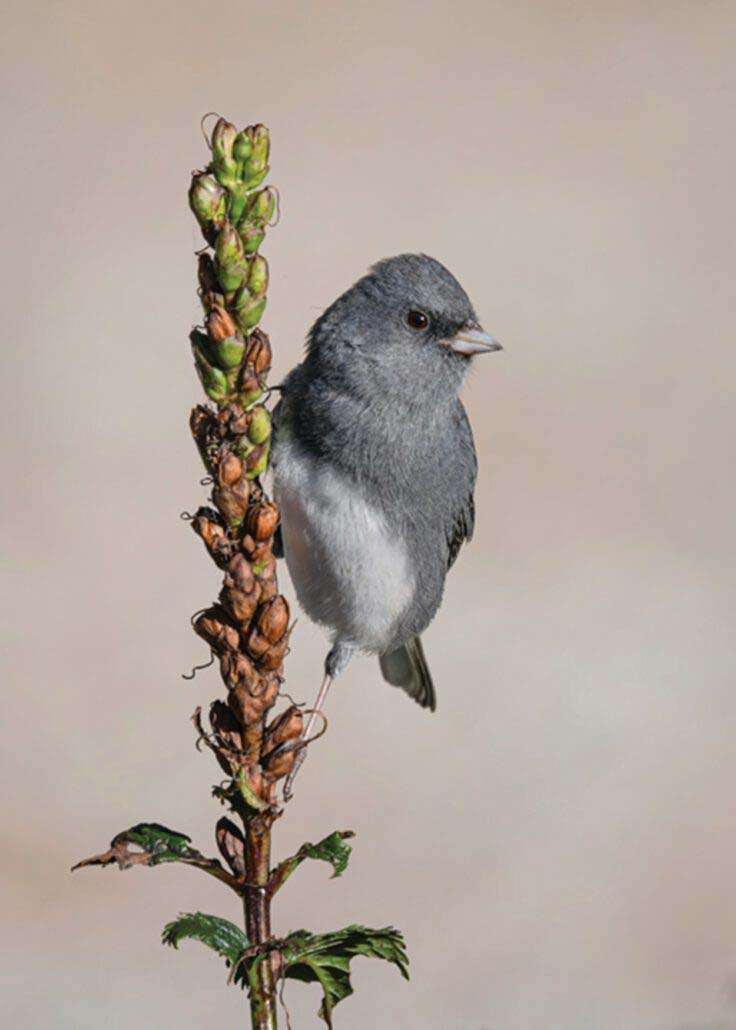
Slate-colored Junco
What role might feeding songbirds at backyard feeders contribute to transmission of avian influenza between songbirds, and what risk might this present to humans?
Importantly, most of the thousands of documented cases of avian H5N1 influenza are currently occurring in large bird species that congregate under conditions that favor influenza transmission; concentrated flocks of waterfowl and commercial poultry activities are two examples.
Additionally, bird species that may feed upon sick or dead H5N1 influenza virus-infected birds make up the bulk of the remaining documented avian influenza cases – vultures, eagles, ravens, crows, etc.
Since 2022, in Western North Carolina, there have been 8 documented reports of H5N1 from all types of wild birds tested and none of these species included songbirds (i.e., three Canada geese, three vultures, two mallards).
There is an absence of available evidence to suggest that feeding songbirds leads to an increase in the rate of transmission of avian influenza between songbirds above the low levels that might occur in the absence of bird feeders.
The one reported human death associated with H5N1 influenza in the U.S. had unspecified “underlying medical conditions” and contracted H5N1 after exposure to both a backyard poultry flock and “wild birds. Of the remaining 66 recognized human infections with avian H5N1 in the U.S., there is no available data suggesting that any of these examples of human disease have been associated with songbird feeders.
One suggestion for enhanced influenza hygiene with bird feeders would be to consider using feeders and bird baths that are readily cleaned with warm soapy water and that will dry out quickly after a good clean water rinse. Another goal might be to put out smaller amounts of bird feed at a time and clean feeders and bird baths often.
Human activities associated with ducks and chickens are recognized risk factors for the occasional human acquisition of the currently circulating H5N1 avian influenza. Handling dead or dying birds without disposable gloves is discouraged. Current vaccines for human seasonal influenza do not provide robust protection against human infection with avian H5N1 viruses.
By Russ Regnery, Ph.D.
Dr. Regnery is a microbiologist and member of the Highlands Plateau Audubon Society. He is retired from a research career with the Center for Disease Control and Prevention in Atlanta.
Favorites Count: 0


